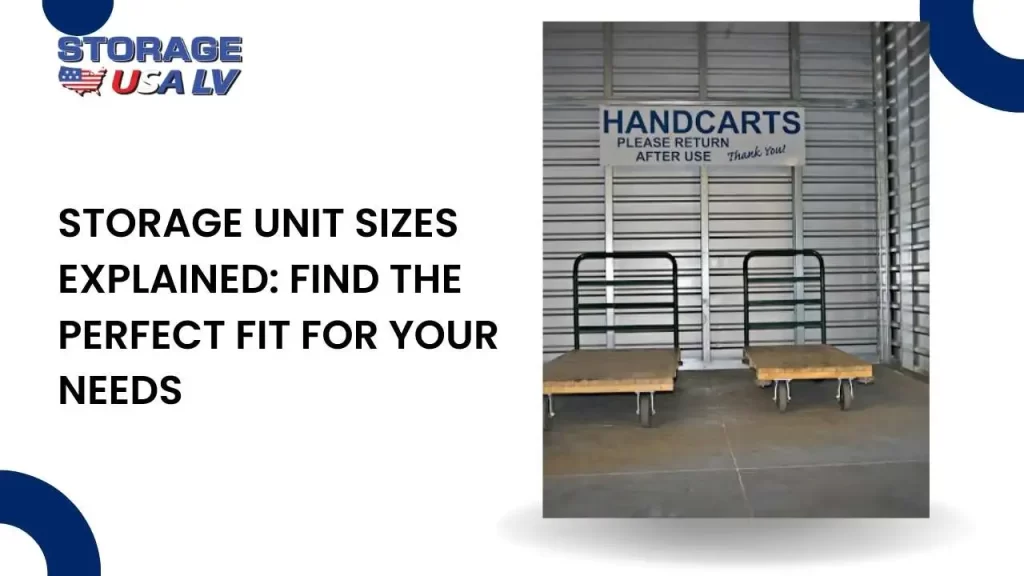
When renting a storage unit, one of the most important factors to consider is size. Choosing the right unit can make a significant difference in both cost and convenience. To help you make an informed decision, let’s explore the different storage unit sizes available and what each one can accommodate.
Understanding Storage Unit Sizes
Storage units are typically categorized into three main sizes: small, medium, and large. Each size has specific dimensions and storage capacity, making it suitable for different items.
1. Small Storage Units:
- Dimensions: 5×5 to 5×10 feet
- Square Footage: 25-50 square feet
- Equivalent to: Regular closet
Small storage units are ideal for storing personal belongings, clothing, boxes, and small furniture items. They are perfect for individuals who need extra space for seasonal items, documents, or hobby supplies.
Examples of items that fit in a small storage unit:
- Seasonal decorations (Christmas trees, Halloween costumes)
- Sports equipment (bikes, kayaks, camping gear)
- Furniture (small tables, chairs, and shelves)
- Boxes of clothing or books
- Tools and equipment
2. Medium Storage Units:
- Dimensions: 15×5 to 10×15 feet
- Square Footage: 75-150 square feet
- Equivalent to: Large closet
Medium storage units can accommodate a wider range of items, including small amounts of furniture, sofas, chairs, chests of drawers, and mattresses. They are suitable for those who need more space than a small unit but don’t require a full-sized garage.
Examples of items that fit in a medium storage unit:
- Furniture (sofas, beds, dressers)
- Appliances (refrigerators, washing machines)
- Electronics (TVs, computers)
- Boxes of household items
- Small vehicles (motorcycles, scooters)
3. Large Storage Units:
- Dimensions: 10×18 to 15×35 feet
- Square Footage: 180-525 square feet
- Equivalent to: Standard one-car garage
Large storage units are the most spacious option and can hold a substantial amount of belongings. They are ideal for storing the contents of a three-bedroom house, including major appliances, furniture, and boxes. Businesses can also use large units for storing inventory, files, and equipment.
Examples of items that fit in a large storage unit:
- Furniture (large sofas, dining sets, king-size beds)
- Appliances (large refrigerators, freezers, washers and dryers)
- Electronics (large-screen TVs, gaming consoles)
- Boxes of household items
- Vehicles (cars, trucks, boats)
Factors to Consider When Choosing a Storage Unit Size
- Quantity of Items: The number of belongings you need to store will determine the size of the unit you require.
- Item Size: Consider the dimensions of your items. If you have bulky or oversized items, you’ll need a larger unit.
- Storage Duration: If you plan to store your items for a long period, it’s often more cost-effective to rent a slightly larger unit to accommodate future needs.
- Accessibility: Think about how frequently you’ll need to access your belongings. A larger unit might be more convenient if you need to retrieve items regularly.
- Budget: Storage unit costs can vary based on size and location. Consider your budget when choosing a unit.
By carefully considering these factors, you can choose the storage unit size that best suits your needs and budget.
